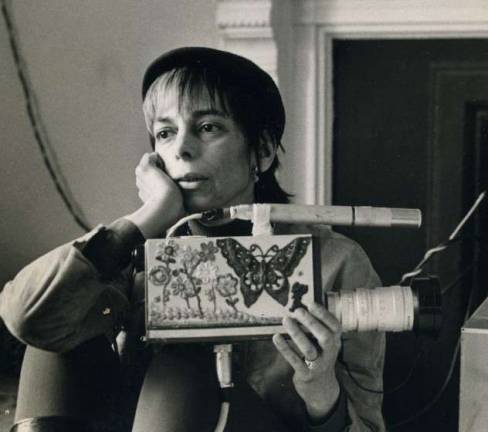Recalling a Film Pioneer's History By Renfreu Neff Shirley Clarke was the godmother of indie films. "Underground films" they were called in the '60's, and despite technology that made film and video equipment more maneuverable, making it more accessible to individual creativity, it was essentially a male universe. The Direct Cinema gents ?Robert Drew, Richard Leacock, D.A. Pennebaker and the Maysles brothers - on one side and seemingly austere opposite the likes of Jack Smith, Stan Brakhage, Kenneth Anger and Andy Warhol. Before them all was the legendary Maya Deren, indeed the high priestess of avant garde film and, to this day a poetic visionary and intellectual force to be reckoned with (The Legend of Maya Deren, a 3-volumn "documentary biography" by VeVe Clark, Millicent Hodson & Catrina Neiman, was published by Anthology Film Archives in1984). No such exhaustive work has been done on Shirley Clarke's filmography, but that vacuum may be lessened with Milestone Films having acquired the rights to four of her features and over a dozen of short films for restoration and release over the next four years. This long overdue retrospective, Project Shirley Clarke, got underway with The Connection, her first feature film and the most controversial movie of the time. In the small realm of independent filmmaking, Deren and Clarke were destined to meet. By then, Deren, eight years the elder, was already a formidable presence in experimental film. Their relationship was prickly, underscored by Deren's ambivalent encouragement, yet there was common ground in their love of dance and in a shared interest in black culture, albeit from very different aspects. Deren died at 44 in 1961, the year The Connection was released. The father of Shirley Clarke (nee Brimberg; Bert Clarke was her former husband with whom she had her daughter, Wendy) had made his fortune in New York's clothing industry and lost it during the great Depression, a downturn that made him angry and abusive toward the family. Wealth was restored with a second fortune through oil investments, but violence and rage remained. Shirley, the eldest of the and daughters, found salvation and escape in modern dance, studying and performing with titans such as Martha Graham, Hanya Holm & Doris Humphries: at 17 she made her debut as a choreographer. It is this sense of rhythmic cutting and spatial connectivity that is apparent in the early short films made between 1954 & '59 (winning prizes at Venice and Edinburgh); In Paris Parks, Bridges -Go-Round, Bullfight, Skyscrapers (an Oscar nomination here). To read the full article at CityArts [click here](http://cityarts.info/2012/05/20/the-book-on-clarke/).

